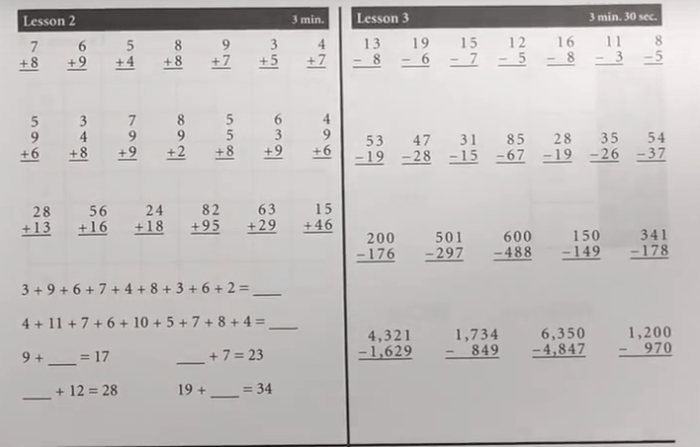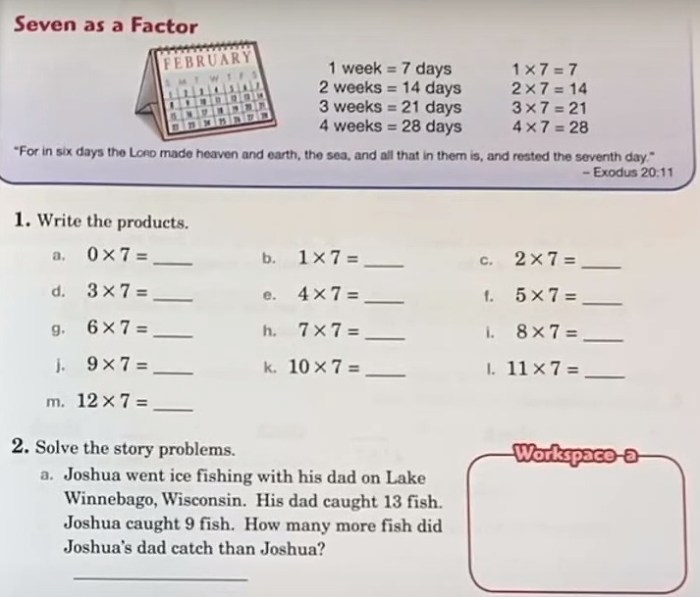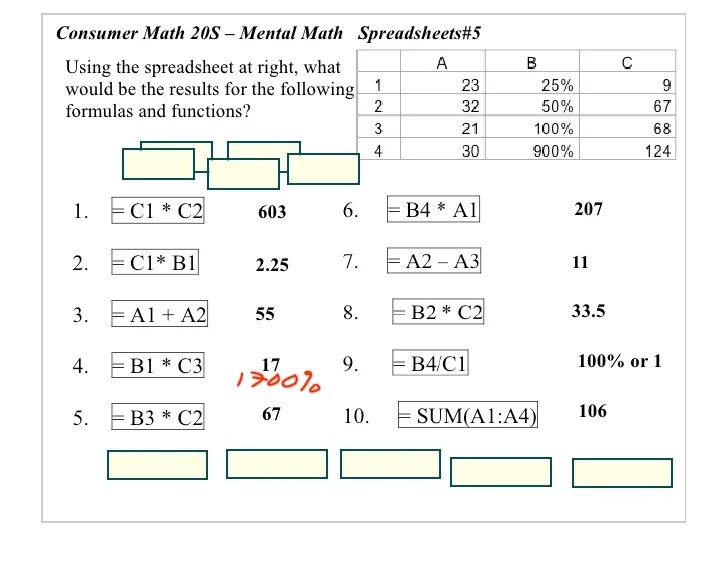The Abeka Consumer Math Test 12 stands as a pivotal assessment, meticulously designed to evaluate your proficiency in practical mathematical concepts. Delve into this comprehensive guide, where we unravel the intricacies of the test, empowering you with effective preparation strategies and a wealth of practice questions.
Our journey begins with an in-depth exploration of the test’s format, duration, and scoring system. We will then delve into the specific math concepts and skills tested, providing you with a roadmap for targeted preparation.
Overview of Abeka Consumer Math Test 12

The Abeka Consumer Math Test 12 is a standardized assessment designed to evaluate students’ understanding of essential mathematical concepts and skills necessary for financial literacy and practical applications in everyday life.
The test is primarily intended for high school students in the 12th grade who are enrolled in consumer math courses. It aims to assess their proficiency in managing personal finances, making informed consumer decisions, and solving real-world mathematical problems.
Test Format
The Abeka Consumer Math Test 12 consists of multiple-choice questions that cover a wide range of topics, including:
- Money management
- Banking and credit
- Taxes and insurance
- Investing and retirement planning
- Consumer rights and responsibilities
Test Duration and Scoring
The test is typically administered in a single session and has a duration of approximately 60 minutes.
The scoring system for the test is based on the number of correct answers, with each question carrying equal weight. Students’ scores are reported as a percentage, indicating their overall performance on the assessment.
Content and Skills Assessed: Abeka Consumer Math Test 12

The Abeka Consumer Math Test 12 evaluates students’ proficiency in various mathematical concepts and skills essential for managing personal finances and making informed consumer decisions.
The test covers a comprehensive range of topics, including:
Math Concepts and Skills
- Number sense and operations (whole numbers, decimals, fractions, and percents)
- Measurement (length, weight, volume, and time)
- Algebra (solving equations, graphing, and functions)
- Geometry (area, perimeter, and volume of common shapes)
- Probability and statistics (data analysis and interpretation)
Types of Questions
The test utilizes various question formats to assess students’ understanding of these concepts and skills, such as:
- Multiple choice questions
- True/false questions
- Short answer questions
- Problem-solving questions
- Real-world application questions
By assessing students’ proficiency in these mathematical concepts and skills, the Abeka Consumer Math Test 12 provides an accurate measure of their ability to make sound financial decisions and navigate the complexities of personal finance.
Preparation Strategies

Adequately preparing for the Abeka Consumer Math Test 12 is essential for success. This involves effective study methods, resource utilization, time management, and a strategic approach to answering different question types.
After the stressful Abeka Consumer Math Test 12, it’s time to shift gears to something a bit more intriguing. Delve into the fascinating world of Unit 9 AP Psychology Vocab , where you’ll explore the depths of human behavior and mental processes.
But don’t forget to come back refreshed for the next Abeka Consumer Math Test 12!
To begin, establish a dedicated study schedule and stick to it. Break down the material into smaller, manageable chunks and allocate specific time slots for each topic. Consistency and regular review are key to retaining information.
Study Resources
- Abeka Consumer Math textbook and accompanying materials
- Online practice tests and quizzes
- Tutoring or study groups
- Flashcards for key concepts and formulas
Time Management, Abeka consumer math test 12
During the test, time management is crucial. Allocate time wisely, ensuring you spend an appropriate amount on each question. Don’t dwell too long on difficult questions; mark them for review and return later.
Answering Question Types
- Multiple Choice:Eliminate incorrect options by process of elimination. Carefully consider each choice before selecting an answer.
- True/False:Read the statement carefully. If you’re unsure, mark it for review and return later with a fresh perspective.
- Short Answer:Provide concise and specific answers. Show your work if necessary, as partial credit may be awarded.
- Problem-Solving:Read the problem thoroughly. Identify the key information and formulate a plan to solve it. Check your answer to ensure accuracy.
Sample Questions and Answers
The Abeka Consumer Math Test 12 assesses students’ understanding of various consumer math concepts. Here are some sample questions and their detailed solutions:
Calculating Simple Interest
A loan of $5,000 is taken out at a simple interest rate of 6% per year for 3 years. How much interest will be paid over the 3-year period?
Solution:
- Simple interest formula: I = P – r – t
- Where:
- I = interest
- P = principal (loan amount)
- r = interest rate
- t = time
- Substituting the given values:
- I = 5000
- 0.06
- 3 = $900
Determining Monthly Car Payment
A car is purchased for $25,000 with a 5% down payment and a 60-month loan at 4% annual interest rate. What is the monthly car payment?
Solution:
- Down payment: 5% of 25000 = $1,250
- Loan amount: 25000 – 1250 = $23,750
- Monthly interest rate: 4% / 12 = 0.33%
- Number of months: 60
- Monthly car payment formula: P = (L – r) / (1 – (1 + r)^-n)
- Where:
- P = monthly payment
- L = loan amount
- r = monthly interest rate
- n = number of months
- Substituting the values:
- P = (23750
- 0.0033) / (1
- (1 + 0.0033)^-60) = $453.43
Understanding Credit Card Statements
A credit card statement shows a previous balance of $350, new purchases of $200, and payments of $150. What is the current balance on the credit card?
Solution:
- Current balance formula: Current balance = Previous balance + New purchases – Payments
- Substituting the values:
- Current balance = 350 + 200 – 150 = $400
Test-Taking Strategies
Approaching the Abeka Consumer Math Test 12 with confidence is crucial. Minimize anxiety by familiarizing yourself with the test format and practicing sample questions. Time management is essential; allocate time wisely for each question and avoid spending too much time on any one question.
Handling Challenging Questions
- Don’t panic if you encounter a difficult question. Skip it and return to it later if time permits.
- Break down complex questions into smaller, manageable parts.
- Use scratch paper to work through problems and visualize concepts.
- Guess intelligently if you’re unsure of the answer, but be strategic in your guesses.
- Don’t be afraid to ask the test administrator for clarification if needed.
Scoring and Interpretation
The Abeka Consumer Math Test 12 is scored based on the number of correct answers. The total number of points earned is then converted into a percentage score.The score ranges and their implications are as follows:
Passing Score
A passing score is typically 70% or higher. This indicates that the student has a good understanding of the concepts covered on the test and can apply them to real-world situations.
Proficient Score
A proficient score is typically 85% or higher. This indicates that the student has a strong understanding of the concepts covered on the test and can apply them effectively to real-world situations.
Advanced Score
An advanced score is typically 95% or higher. This indicates that the student has an exceptional understanding of the concepts covered on the test and can apply them creatively to real-world situations.
Expert Answers
What is the purpose of the Abeka Consumer Math Test 12?
The test evaluates students’ understanding of practical math concepts essential for financial literacy and everyday decision-making.
What types of questions are included in the test?
The test comprises a variety of question formats, including multiple choice, short answer, and word problems.
How can I prepare effectively for the test?
Utilize study resources, practice sample questions, and seek guidance from teachers or tutors.